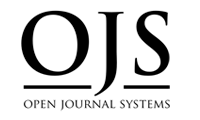Hidden potential of fruit waste and its utilization
Main Article Content
Abstract
The global increasing population demands for more food production and food processing which consequently results in more food waste generation. The total waste produced in different stages of processing of food generally comprises of peels, pomace, seed, pulp, unused flesh and damaged food which is biodegradable in nature. These by-products are a good source of bioactive compounds like polyphenols, antioxidants and phytochemicals. They are the storehouse of complex carbohydrates, lipids, proteins and nutraceuticals depending on the nature of product produced for example poultry and meat industries are rich the source of proteins and lipids, fruits and vegetable processing industries are rich in bioactive compounds and cereal industries are good source of phenolic compounds and dietary fiber. The food waste or by-products are important source of colorants, fiber, flavoring and antimicrobials which are used in food industry as a source of food additives. The phenolic compounds present in by products of different foods exhibit anti-oxidant, anti-microbial, anti-inflammatory, immune-modulatory activity and play a major role in reducing the risk of cardiovascular problems, osteoporosis, thrombosis, platelets aggregation and diabetes in humans. By products from different industries can be used to develop value added products in India where poverty and malnutrition are the major issues. Developing effective policies for the utilization of food waste along the value chain can help reduce food waste problem and contribute towards food security and sustainability.
Keywords: By products, Bioactive compounds, Food industry, Food waste.
Article Details

This work is licensed under a Creative Commons Attribution-NonCommercial-ShareAlike 4.0 International License.



